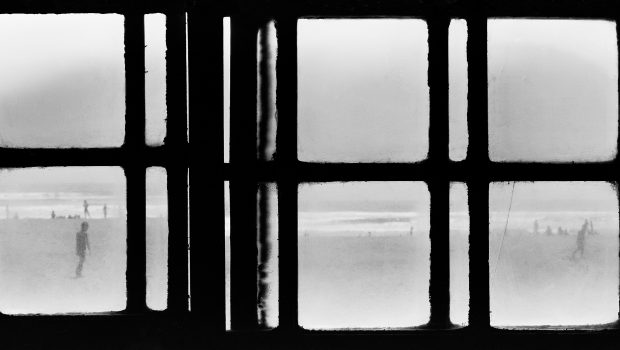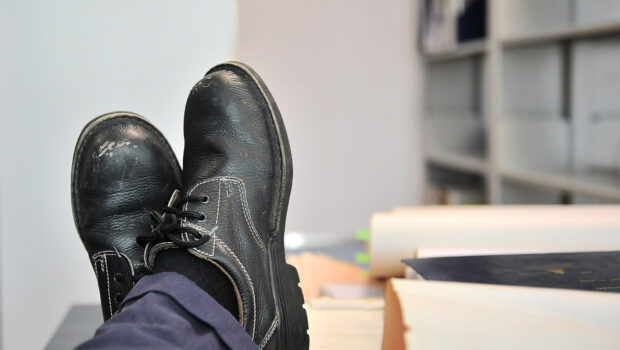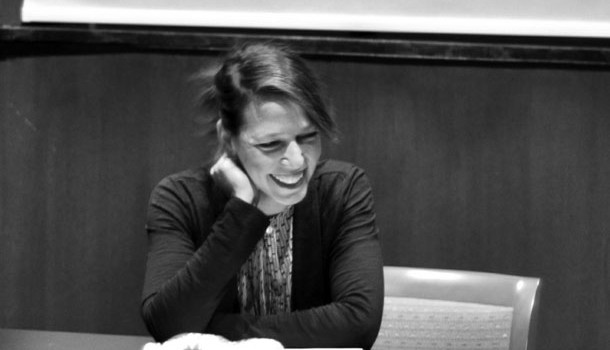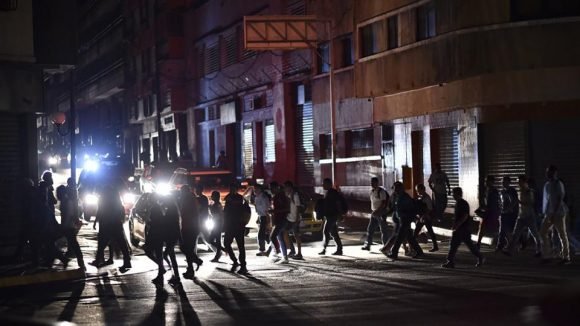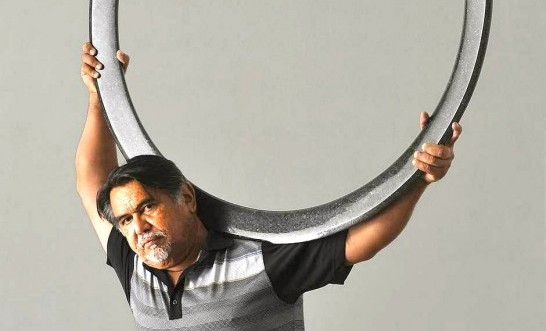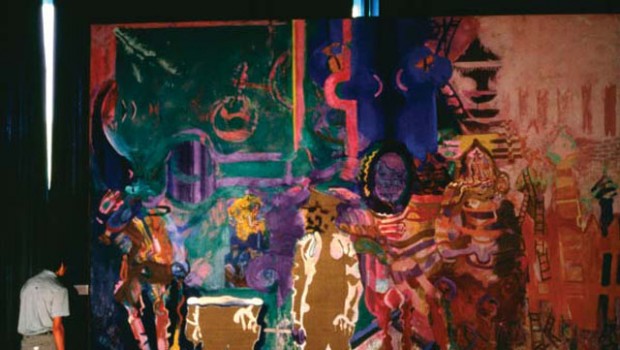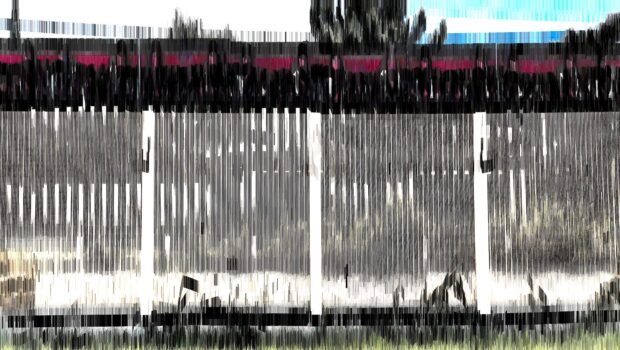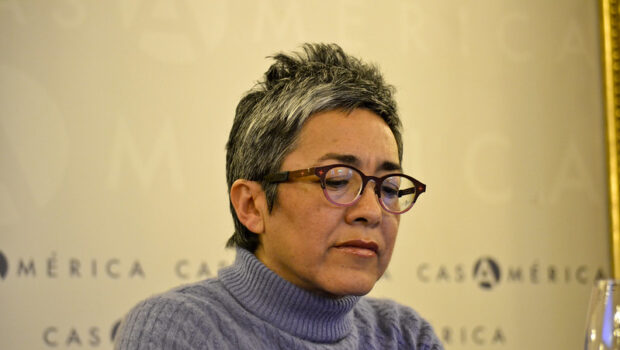Fixing Shadows
Fernando Castro R.
Contemporary Peruvian Photography 1968-2015 (an inside story)
Last April, the Blanton Museum of Art in Austin opened the exhibition Fixing Shadows: Contemporary Peruvian Photography 1968-2015. This show, curated by Beverly Adams, the Blanton’s curator of Latin American Art, features over 65 different works by Mariella Agois, Juan Enrique Bedoya, Luz María Bedoya, José Casals, Fernando Castro, Jorge Deustua, Carlos Domínguez, Roberto Fantozzi, Billy Hare, Pablo Hare, Edi Hirose, Fernando La Rosa, Jaime Rázuri, Javier Silva, Milagros de la Torre, TAFOS, etc. It will be on view at the Blanton until July 3, 2016. Given the disdain some Latin American art curators have for any straight photography that does not bear the conceptual label, kudos to Adams for choosing to do an exhibit which features many modes of photography. After all, photography was the most important medium of the 20th century, and thanks to smartphones—at the rate of 1.4 billion photos per day—it will probably remain so for many years to come. Adams also deserves praise for an almost unprecedented curatorial feat: putting ego aside in favor of collaboration, comprehensiveness, and understanding.
At first the title of the exhibit, Fixing Shadows, threw me for a loop. I took it to be related to the 1989 exhibit and accompanying book On the Art of Fixing a Shadow: One hundred and fifty years of photography. The book dealt with artistic achievements in photography throughout history and celebrated the 150th anniversary of William Henry Fox Talbot’s 1839 invention of the negative-positive process, which he called “the art of fixing a shadow.” But the current title does not allude to Talbot. As Robin Williams, assistant curator of the current exhibit, wrote in the exhibition catalog, the title came from an interview with Milagros de la Torre, one of the participating artists, who used the metaphor of shadow (darkness) to describe the war against terrorism that Peru underwent from 1980 to circa 1993, when Abimael Guzmán (a.k.a. President Gonzalo), leader of the Maoist terrorist organization Sendero Luminoso, officially declared peace not only with the government but more broadly, with Peruvian civil society. Hence, the title’s phrase is tantamount to “recording darkness.” Fortunately, this metaphor does not define the whole exhibit. Rather, the bulk of it is more akin to Talbot’s vision of fixing shadows in order to make art—what he saw as the creative marks of the “pencil of nature.”
First, let’s make a chronological point. The works of Casals, Agois, Deustua, Domínguez, La Rosa, and myself were produced before 1980, when Sendero Luminoso announced itself in downtown Lima by mercilessly hanging dozens of dead dogs from lamp posts. What a hideous installation that was! The photojournalistic photographs in Fixing Shadows that show the effects of terrorism were made after that year. They are more properly viewed as gripping works that provide insight and context to what was going on around 1989, when The Peruvians was put together. Indeed, that part of the exhibit was my responsibility. Williams makes an additional point about that dark period: “Having grown up in Lima during the 1970s and 1980s, the younger artists in Fixing Shadows experienced the turmoil of those decades in their youth and remain deeply affected by it.”
The Peruvians came into Fixing Shadows serendipitously. In their preliminary research, Beverly Adams and Robin Williams travelled to Peru in order to visit galleries, museums, and artist studios. Those trips resulted in the selection of the more recent works in the exhibition. Although the documentary mode was not entirely absent in this selection, the reflective mode prevailed. Edi Hirose’s landscapes showing the carving out of the sillar quarries in Arequipa and Pablo Hare’s color series of small-town monuments with their idiosyncratic connection to the people who host them come closest to the documentary mode. But Flavia Gandolfo’s blackboards move away from information and bring up the question of official history taught in public schools. Milagros de la Torre’s negative images revisit the very process of analog photography, as they reveal people’s quirks and the photographer’s ideology at the moment of portraiture and in the production of the positive black-and-white print. The red dye on the negatives lightens people’s skins on a positive print that is never reached. Luz María Bedoya’s Blind Spot panoramas along the Panamerican highway challenge the very idea of the sublime landscape, or perhaps recall an early 19th-century landscape. They show what costeño Peruvians are very familiar with: the minimalistic coastal desert. The QuickTime animation by Gilda Mantilla and Raimond Chaves of San Lorenzo induce us to reflect upon the island’s infamous history as a prison, but also of its sheer material presence on a Peruvian coastline that is almost devoid of islands.
During those trips to Peru, Adams and Williams also came to understand the crucial role Secuencia —the gallery and photography workshop—had played in contemporary Peruvian fine art photography. I will elaborate more on this point later.
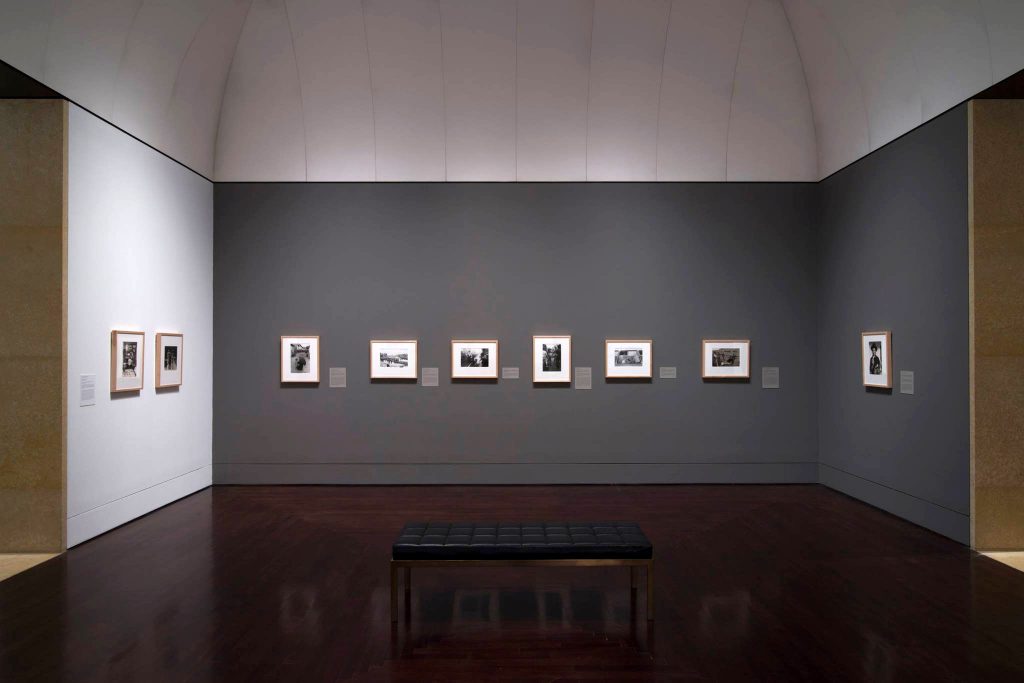
On her return to Austin, out of curiosity, Adams googled “Peruvian photography” and ended up at the website of one of the most important collections of photography in the world: the Harry Ransom Center. It happens to be just around the corner from the Blanton. There, Adams found over a hundred images from an exhibit called The Peruvians that I curated in 1989. Curiously, that exhibit also originated in Texas as the initiative of William Wright, Texas businessman, philanthropist, and a fine photographer in his own right. It was shown at several venues in Texas, including Fotofest 1990 in Houston, and at the Washington Center for Photography.
William Wright visited Peru in 1988 when an exhibit of his own work called People’s Lives was shown at the Instituto Cultural Peruano Norteamericano (ICPNA). He fell in love with the country and wanted to bring back to Texas a little bit of the feeling of beauty and tragedy that it inspired. Being a documentary photographer himself, he envisioned organizing an exhibition of documentary photography by Peruvian photographers. He shared his idea with Fernando Torres, the director of cultural programs of the ICPNA. After some detours, the message finally reached a group of established photographers that included me. Wright proposed to fund and travel an exhibition of about ten contemporary documentary photographers, each one submitting an average of ten archivally printed black-and-white photographs. About eight photographers met at ICPNA to discuss the proposal and after much deliberation and concerns, elected me to curate the exhibition. My election was not gratuitous; it resulted from my tireless campaign of writing about photography for El Comercio, the most important Lima daily at the time, and for Lima Times, the English weekly. I accepted curating the exhibit with the caveat that I was not going to exclude myself.
So began the process that Adams understood very well when she merged her current curatorial project with mine. I did not stick to the letter of Wright’s request in every case. Knowing the somewhat unclear boundaries of documentary photography, I gave myself some license. Had I stayed safely within the documentary mode, the exhibit would not have shown what needed to be seen. Mariella Agois’ dreamy images of children at play, or Juan Enrique Bedoya’s beach portraits, for example, are arguably not in the documentary mode, but I thought they brilliantly showed something important about the recreational behavior of Peruvians of all ages. The exhibit I curated came to be known as The Peruvians, and frankly I do not recall whether it is a name I chose, or Bill Wright chose, or somebody else chose along the way.
Another aspect of The Peruvians exhibit was that, while it included photographers like Billy Hare, Roberto Fantozzi, Mariella Agois, Carlos Montenegro, María Cecilia Piazza, Javier Silva, Mariel Vidal, and myself, who were linked to Secuencia—a project that had come to an end nine years earlier— other photographers were included who had never shown at Secuencia Foto-Galería. That was the case of José Casals, Jorge Deustua, and Lorry Salcedo. The latter was particularly important because his work depicted the Afro-Peruvian community—a subject insufficiently addressed in Peruvian photography. Finally, I also included the work of some photojournalists whose work I had been tracking in the Lima periodicals like Carlos “Chino” Domínguez, Jaime Rázuri, Jorge Ochoa, René Zegovia, and Rafael Crisóstomo. At the time only photojournalists were addressing the internal war and political turmoil. That curatorial decision generated new challenges. Wright’s stipulation that the photographs be archivally printed left a few photojournalists at a disadvantage because they usually they did not print their own work. Magazines printed their photographs in high contrast so that they would reproduce better in ink; but ceteris paribus, this type of printing, is considered uncouth in an art exhibit. I needed to convince Caretas to loan me the negatives in order to print them myself, and it was not easy. Finally, Roberto Fantozzi and I printed and/or selenium-toned the negatives of many of the photojournalists in the exhibit, and other photographers who were unable to do so themselves. That was the technical legacy from Secuencia: the know-how to produce museum quality prints. Secuencia was very important because its implicit aim was to put photography on a par with other established media of creative expression like literature, painting, theater, and the like. Fernando La Rosa was the pivotal figure in that pursuit.
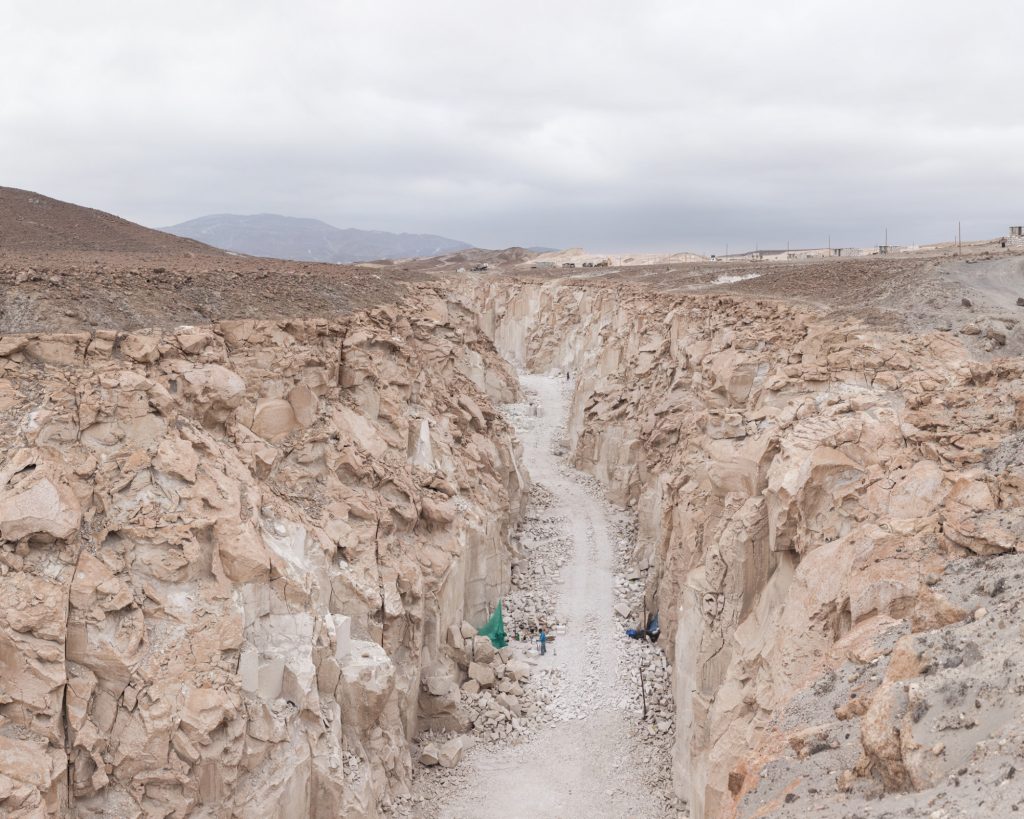
Fernando La Rosa. Ventana II, 1974.
Fixing Shadows features four of La Rosa’s prints from his Lima period. Why are they important in this exhibit? In addition to the techniques of developing and printing fastidiously well, La Rosa showed us the transforming power of our gaze like nobody else had before. This statement is not mere hyperbole. He demonstrated with his own works how an ordinary object becomes luminously significant in the final print. In a sense, he did with the photographic medium what poetry can do with language. When I came to understand this aspect of his work, it became clear to me how far from documentary photography it was. If documentary photography is the correlate of a factual statement and advocacy for a cause, La Rosa’s work is more like an open question, an epiphany, a trip, or a poem. Nobody else’s work in either exhibit sets forth that mode of photography.
One must not draw the inference that anything in the 1989 The Peruvians exhibit is logically or causally connected with the Fixing Shadows 2016 exhibit. First of all, The Peruvians took the form it did because it was commissioned to be a documentary photography exhibit (as much as I tried to stretch the scope of the term), and in the end those boundaries made the project interesting, but also molded it. Secondly, at the time when it was put together, many of the photographers featured in that exhibit were already doing different work. In fact, a couple of years later I curated The Broken Vessel, an exhibit that was shown at Camera Work in San Francisco, Lehigh University in Pennsylvania, and Cerrillos Cultural Center in New Mexico. It was heavily influenced by staged photography and it included Billy Hare’s talismanic tables; Roberto Huarcaya’s Continuum series of human specimens in glass jars; Anamaria McCarthy’s Adiós, André, a series that resulted from the loss of an unborn child; and Maria Cecilia Piazza’s phantasmagorical images of religious processions. Third, the younger generation of Peruvian photographers in Fixing Shadows has found its own ideological way in the medium, independently of the Secuencia generation. To them, the Secuencia generation is background noise, lines on the sidewalk to be avoided, or stepped on and overcome. Perhaps Andreas Gursky, Luis González Palma, Richard Misrach, Cindy Sherman, and the conceptual wave are a stronger influence on them than Secuencia. Lastly, in art there is no such thing as progress. In other words, there is no meaningful sense in which Anselm Kiefer’s Osiris and Isis (1987) is more “advanced” than Picasso’s Demoiselles de Avignon (1907). Fernando La Rosa’s 20th-century works are as compelling as anything done last year.
In Fotofest 1990, The Peruvians exhibit was mounted at Treebeards restaurant. As grateful as I was for having been invited by Fotofest to attend that year’s event and review portfolios, I was disappointed about the exhibit’s venue. However, I kept that disappointment to myself, and my reviews at El Comercio and Lima Times were very positive. It was the start of my apprenticeship as to what makes the world of fine art photography click. Moreover, my time at Fotofest 1990 cemented my connections to Fred Baldwin and Wendy Watriss, whose cooperation made it possible two years later to bring to fruition the most successful exhibit of Peruvian photography ever: Modernity in the Southern Andes: Peruvian Photography 1900-1930. In that exhibit the theme of modernity was first connected with the photography that took place in Cuzco, Puno, and Arequipa in the first decades of the 20th century; and the work of Martín Chambi and the Vargas Brothers was shown vis-à-vis that of their many peers.
To be sure, in curatorial endeavors every curator cuts the pie according to their own instincts, taste, interests, and understanding of what the subject matter is. Fixing Shadows will remain one of the most interesting and important exhibits of contemporary Peruvian photography. Hopefully, it won’t have a gun, but it will travel. If we were to assemble a different subsequent exhibit for which Fixing Shadows would serve as a starting point—Chasing Shadows, perhaps?—I would find a curatorial concept to include the work that Roberto Huarcaya, Anamaría McCarthy, Juan Enrique Bedoya, Mariano Zuzunaga, Ana de Orbegoso, Fernando La Rosa, Billy Hare, Milagros de la Torre, Roberto Fantozzi, and myself did in the 21st century. But that would be a different pie altogether.
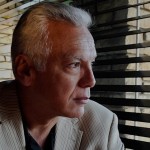 Fernando Castro es artista, crítico y curador. Estudió filosofía en la Universidad de Rice con una beca Fulbright. Es miembro de la comisión técnica del FotoFest y del consejo consultivo del Center for Photography de Houston. Editor y colaborador de las revistas Aperture Magazine, Art-Nexus, Literal Magaziney Spot.
Fernando Castro es artista, crítico y curador. Estudió filosofía en la Universidad de Rice con una beca Fulbright. Es miembro de la comisión técnica del FotoFest y del consejo consultivo del Center for Photography de Houston. Editor y colaborador de las revistas Aperture Magazine, Art-Nexus, Literal Magaziney Spot.
ENDNOTES
1 The acronym TAFOS stands for Talleres de Fotografía Social. The project focused not on one photographer, but on a collective. TAFOS was founded in 1986 by German photographers Thomas and Helga Mueller. Their idea was to give people the chance to photographically document their own lives, rather than rely on professional photographers from ‘outside’. TAFOS set up workshops with basic training, cameras, and development opportunities. The first workshops were in El Agustino (Lima), and Ocongate (Cuzco), but by the time the project came to an end in 1998 there was a total of 28 workshops in different regions. The TAFOS archive is now housed in the PUCP (Catholic University in Lima), which also has a good, bilingual website with low-resolution images.
2 On the Art of Fixing a Shadow: One Hundred and Fifty Years of Photography, by Sarah Greenough, Joel Snyder, David Travis, and Colin Westerbeck. Snyder is one of the most interesting writers about photography and photographic history; more scholarly and informed than Susan Sontag or Roland Barthes; not prone to random generalizations.
3 Here there is an issue of dates and priority that requires a few words. From a Wikipedia entry about Henry Fox Talbot we get the following summary: “Shortly after Louis Daguerre’s invention of the daguerreotype was announced in early January 1839, without details, Talbot asserted priority of invention based on experiments he had begun in early 1834. At a meeting of the Royal Institution on 25 January 1839, Talbot exhibited several paper photographs he had made in 1835. Within a fortnight, he communicated the general nature of his process to the Royal Society, followed by more complete details a few weeks later. Daguerre did not publicly reveal any useful details until mid-August, although by the spring it had become clear that his process and Talbot’s were very different.”
4 In her text for the exhibition catalog, Robin Williams wrote, “In a 2011 interview, Milagros de la Torre described her examinations of the photographic image and its role in constructing Peruvian identities as stemming from “a desire to make sense of it all, of fixing the shadows.” Ms. de la Torre finished the interview describing her work thus: “Depending upon which project, I believe there’s a common thread that runs throughout my work along the almost twenty years, as an artist. The idea of the trace, de-codification, the marginal and the comprehension of a dark side within all of us.” Edward J. Sullivan, “Interview with Milagros de la Torre,” May 17, 2011. http://www.as-coa.org/articles/interview-milagros-de-la-torre.
5 Milagros de la Torres’ works in the exhibit bear the name Under the black sun (Bajo el sol negro). They consist of negative images of mostly indigenous peoples portraits. They often show the red dye with which negatives were treated in order to make the skin of the subjects lighter.
6 Fernando La Rosa was not part of The Peruvians exhibit. Said exhibit included only photographers working in Peru at the time. La Rosa was living in New Orleans in 1989. However, he endorsed the project wholeheartedly.
7 Peter Galassi in his book Before Photography: Painting and the Invention of Photography (Museum of Modern Art. New York: 1981) argued that an artistic tradition of the “sketch” bloomed in European art just before the advent of the photographic medium. It favored plain landscape, as opposed to the “historically important” landscape (place of a battle, great deeds, etc.). In a sense, Luz María Bedoya is reconnecting with that landscape sketch tradition that paved the way for what photography could chose to do.
8 There are actually two islands just northwest of Lima and west of El Callao: San Lorenzo (the largest one) and El Frontón (the small one). The name El Frontón became synonymous with “prison”; but the naval base in San Lorenzo is the one that in the eighties and nineties served as a prison for the terrorist militants of Sendero and MRTA.
9 Since then Bill Wright has published The Tiguas: Pueblo Indians of Texas (1991) and Portraits from the Desert (1998).
10 It’s been 27 seven years, and I only vaguely recall who was in that meeting. Here’s a corrigible list: Carlos Aramburú, Billy Hare, Roberto Fantozzi, José Casals, Jorge Deustua, Alicia Benavides, and myself. I would appreciate help correcting this list.
11 Today, I would probably not give it that name because it does not mesh with my philosophical convictions about nationalism. What defines these photographers is not their connection to that abstract entity called “nation”, but their talent to see the world in an interesting way.
12 At the time the only Peruvian artist I was aware of, who was addressing the internal war was Juan Javier Salazar. In fact he had been producing photographic silkscreens around that time. One of them was of the iconic matchbox “Llama” (ambiguous between “flame” and “llama”) that he cleverly titled Algo va a pasar. https://redaccion.lamula.pe/2015/02/21/la-idea-es-que-todos-los-artistas-venden-aire-y-nosotros-vendemos-cosas-la-maldicion-del-objeto-ya-la-tenemos-encima/andreshare/
13 In fact, Roberto and I produced about 20% of the prints in the exhibit. Roberto Fantozzi became my greatest collaborator in the project. He generously gave me access to the darkroom at his home, discussed my choices, helped me print the negatives of other photographers, made recommendations, gave me leads, connections, etc. He also helped me deal with the issue of scarcity of photographic paper, selenium, etc.
14 La Rosa ran experiments in his darkroom using as variables different film, papers, developers, exposures, development times, etc. At MIT he had learned the principles of the Zone System from one of its inventors, Minor White.
15 The Broken Vessel: Ten Contemporary Peruvian Photographers: Fernando La Rosa, Javier Silva, Fernando Castro, Roberto Fantozzi, Mariano Zuzunaga, Anamaria McCarthy, Philipp Scholz-Rittermann, Maria Cecillia Piazza, Lorry Salcedo and Roberto Huarcaya, was at Camera Work, San Francisco, from July 8th to August 9th, 1997. http://www.sfcamerawork.org/archive-1997/.
16 Some of the younger photographers in Fixing Shadows were students of Secuencia photographers like Carlos Montenegro and Billy Hare, but ideologically they have focused in different issues and concerns.
17 This exhibit’s name was later changed to Visions of Modernity: Peruvian Photography 1900-1930. Edward Ranney, Peter Yenne and myself collaborated curating it. The name was changed when Curatorial Assistance took over the exhibit’s travel, which was extremely difficult for Peter Yenne and me to handle. What I take seriously about the distinction between modernity and post-modernity is what follows. At the end of the 19th century and beginning of the 20th century, people around the world believed that industry, education, science, technology, and cosmopolitanism were going to improve their lives. We actually see evidence that supports this statement in the exhibit. If post-modernity makes any sense, it is that industry, technology, and cosmopolitanism have undermined that hope, and have become part of the problem.
18 Modernity in the Southern Andes: Peruvian Photography 1900-1930 merited a half page review by Charles Hagen in the New York Times: http://www.as-coa.org/exhibitions/visions-modernity-photographs-peruvian-andes-1900-1930. Other notable writers like Vicky Goldberg, and Max Kozloff, wanted to write about it, but Hagen put his foot on the door first. This exhibit was shown at Fotofest 1992, Houston (1992); Encuentro de Fotografía Latinoamericana, Caracas (1993); Americas Society. New York (1994); Lehigh University Art Gallery, Pennsylvania (1994); University Art Gallery, Boston University, Massachusetts (1995); Freedman Gallery, Albright College, Pennsylvania (1995); Samek Art Museum, Bucknell University, Pennsylvania (1996); Fotosetiembre Latinoamericano, México, D.F. (1996); Mexican Museum, San Francisco, California (1997); etc.
19 The phrase comes from Have Gun – Will Travel, an American Western television series that aired on from 1957 through 1963. I mention it because on June 1, 2015, Texas governor Greg Abbott signed S.B. 11, also known as the “campus carry” law. S.B. 11 provides that license holders may carry a concealed handgun throughout university campuses, starting Aug. 1, 2016. The law gives public universities some discretion to regulate campus carry. The Blanton Museum and the Harry Ransom Center are both part of the University of Texas, where starting next fall students will be able to carry fire guns. From the Blanton Museum, one can see The Tower from which Charles Whitman, an engineering student of the University of Texas and former Marine sniper, gunned down 49 people, killing 16 of them on August 1st, 1966. He had brought to campus several handguns, rifles, and a shotgun. Whitman was shot and killed by the policemen who stormed The Tower.
Posted: July 12, 2016 at 11:14 pm


